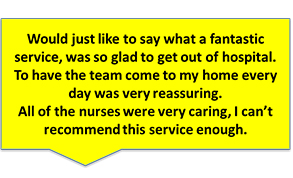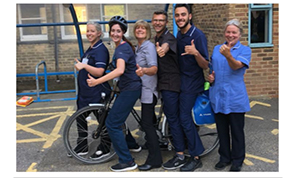Alumni story / Hospital @ Home
The new NHS long term plan sets out the pathway for a new service model fit for the 21st century. The first aim of the model is to boost out of hospital care, which is backed by a commitment to significantly increase investment in community health services over the next five years.
The commitment is a recognition of the vital role community services have in improving outcomes, patient flows and efficiencies across the whole health system. The HFMA’s ‘Healthcare in the Community’ Special Interest Group has been helping to shape the association’s research and work programme on community services, including a series of three reports which focus on evidence, backed by case studies, on how community services add value.
One such case study, from Sussex Community NHS Foundation Trust (SCFT), was the subject of a break out session at the HFMA conference in December, presented by SCFT’s Jamie Bewick and Mairead Dolman.
Hospital @ Home is a collaboration between SCFT and the acute Trust Brighton and Sussex University Hospitals. The service looks after sub-acute patients who would normally remain in a hospital bed. It enables patients to be supported by a nursing team in their own home while remaining in a virtual ward under the care of an acute consultant.
The two organisations have built strong patient focused pathways, with several new pathways in development. Current pathways are mainly focused on:
- Anti micobial therapy
- Bronchiectasis admission avoidance
- Negative pressure wound therapy for vascular patients
Mairead and Jamie spoke of the benefits of the Hospital at Home service
For patients
The service enables patients to remain more independent, to carry on with normal life and maintain their own identity while receiving care. Patients recover more quickly both physically and emotionally. There is minimal risk of hospital acquired infection and the readmission rate is very low. The service has had extremely positive feedback from patients including the example below.

For staff
The service has been extremely successful in recruiting and retaining nursing staff because it offers the benefits of working in a community setting while also enabling staff to develop and retain their skills by working with acute patients under the care of acute consultants. The service is fully staffed and has attracted ambitious and forward looking people looking to work in a new and developing service.
 Financial and patient flow
Financial and patient flow
The service is a successful example of how re-providing acute services in a community setting brings both financial benefits and can benefit patients, staff and the wider health system
The next meeting of the HFMA Healthcare in the Community Special Interest Group is in June, if you would like further information on the group, then please email [email protected]
Jamie ran a workshop at the 2018 HFMA annual conference in London. For details on the 2019 HFMA annual conference please click here
Related content
The Institute’s annual costing conference provides the NHS with the latest developments and guidance in NHS costing.
The value masterclass shares examples of organisations and systems that have pursued a value-driven approach and the results they have achieved.